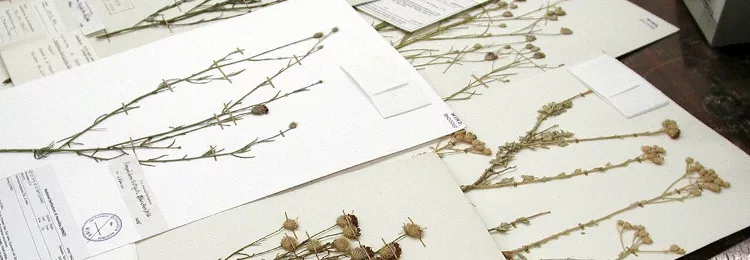Herbaria, collections of preserved plants and fungi, are valuable sources of data essential to studies in a number of fields within the biological and environmental sciences including taxonomy, systematics, anatomy, ecology, and conservation biology. In particular, small local herbaria play a critical role in the study of regional biodiversity. In addition, they are important to supporting faculty/student research, teaching, and the training of future organismal biologists. The Jewell and Arline Moss Settle Herbarium at SUNY Oneonta currently contains over 14,000 specimens including algae, bryophytes, lycophytes, ferns, gymnosperms, angiosperms, and fungi, representing collections from central New York and Adirondack Park spanning from 1898–2022. Functioning primarily as a teaching herbarium, it also contains vouchers for New York State county floras and supports molecular and ecological research on plants of New York State.
Research Sources
Vascular Plant Collection
The majority of our specimens are of vascular plants. While the majority of our collections are from central New York, we house collections from other parts of the world. To access label data and images of our specimens, please search our collections on the Consortium of Northeastern Herbaria.
Bryophyte Collection
The collections of Sean Robinson and his students make up the majority of our bryophyte collection. While the majority of our bryophyte collections are from New York State, we house collections from other parts of the United States and Europe. To access label data and images of our specimens, please search our collections on the Consortium of North American Bryophyte Herbaria.
Fungi Collection
In addition to vascular and non-vascular plants, our herbarium houses the mycological collections of Dr. Currie Marr. Dr. Marr was a faculty member in our Biology Department from 1968–1998. While he collected a variety of different fungi, Dr. Marr’s research was primarily focused on coral fungi. To access label data and images of our specimens, please search our collections on the Mycology Collections Portal.
